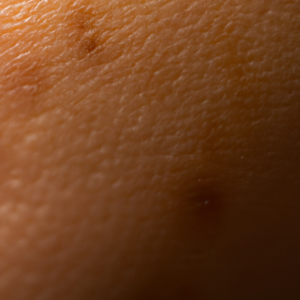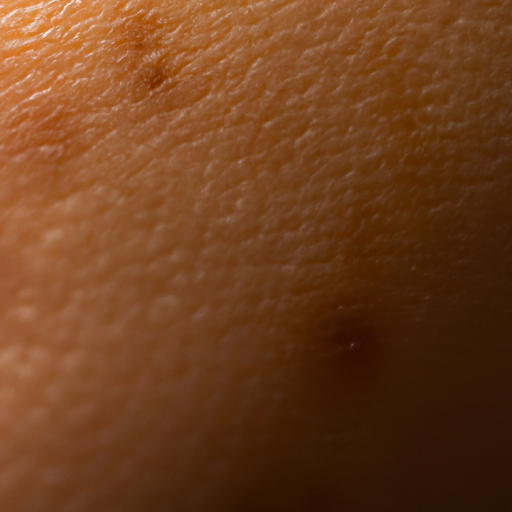Hello! Let’s Talk About Lentigo
So, I recently noticed some dark spots on my skin, and after doing some research, I found out that they were lentigines. What are lentigines, you might ask? Well, don’t worry, I’m here to give you an overview.
Lentigo, or lentigines (plural), are flat, dark spots that appear on the skin, often in round or oval shapes. They are usually smaller than 1 centimeter in diameter and can be found on any part of the body. The spots themselves are harmless, but they can be a cosmetic concern.
Now that you know what lentigines are, let’s delve a little deeper into the subject.
What are the Signs of a Lentigo?
Well, let me tell you, when it comes to spotting a lentigo, there are a few key things to look out for. First off, these are dark, flat spots that can appear on your skin. They’re usually round or oval-shaped and don’t cause any itching or pain. Interestingly enough, they’re also typically smaller than 1 cm in diameter.So, if you notice any of these characteristics on your skin, it’s possible that you could have a lentigo. But who is most at risk for developing these pesky spots?Well, fair-skinned individuals and older adults are more likely to experience lentigines. Additionally, those who have had a history of sun exposure are also at higher risk. But what can we do to prevent and treat these spots should they appear? One important measure is sun protection. Using sunblock and wearing protective clothing can go a long way. It’s also best to avoid tanning beds altogether.Should a lentigo become a concern, there are treatments available such as laser therapy or cryotherapy. But ultimately, the key is to be aware of these signs and take preventative measures to avoid them in the first place.
Who’s at Risk for Lentigines?
As someone who has diagnosed Lentigines in many patients, I know that certain factors make some individuals more susceptible to this skin condition than others. Here are three groups of people who are at a higher risk of developing Lentigines:
1. People with fair skin
If you have pale skin that burns easily, you are more likely to develop Lentigines. Your skin has less melanin to protect itself from UV rays and thus becomes more vulnerable to sun damage.

As you age, your skin goes through changes that make it become thinner and drier. These changes can cause skin cells to cluster and form Lentigines more easily. Older adults are also often exposed to the sun and may have accumulated sun damage over the years, exacerbating their risk for Lentigines.
3. Habitual sun exposure
If you regularly spend time in the sun without protection, you are more likely to develop Lentigines and other sun-related skin conditions. Spending long hours outdoors, especially between 10 a.m. and 4 p.m. when the sun is at its strongest, puts you at a higher risk.
Overall, anyone can develop Lentigines, but these groups are at a higher risk. If you think you might have Lentigines or want to reduce your risk of developing them, there are several prevention and treatment options available.
How to Stop Lentigines in Their Tracks: Prevention and Treatment Tips from an Expert
Hi there! As someone who has dealt with my fair share of lentigines, I understand how frustrating they can be. But the good news is, with the right prevention and treatment methods, you can keep them at bay.
The most important thing you can do to prevent lentigines is to protect your skin from the sun. This means wearing sunscreen with an SPF of at least 30, seeking shade during peak sun hours, and covering up with clothing and hats. Tanning beds are also a big no-no, as they can cause the same damage as natural sunlight.
If you already have lentigines, there are a variety of treatment options available. Laser therapy is a popular choice, as it can remove the pigmented areas without damaging the surrounding skin. Cryotherapy is another effective option, which freezes the lentigines and causes them to slough off.
That being said, it’s important to keep in mind that not all lentigines require treatment. If you notice any suspicious changes in your spots, such as irregular borders or rapid growth, it’s best to consult a dermatologist.
Remember, prevention is key when it comes to lentigines. By taking steps to protect your skin and catching any changes early on, you can keep these pesky spots from becoming a bigger problem down the road.
The verdict on Lentigo: stay sun-safe!
So, there you have it – Lentigo may sound like a scary skin condition, but it’s really just a fancy name for age spots caused by sun damage. While they’re usually benign, it’s still important to protect yourself from UV exposure to avoid more serious skin problems down the line.
If you’re concerned about preventing, treating, or managing your Lentigines, be sure to talk to a dermatologist or other medical expert for advice. And don’t forget to check out Brightside Beauty for more tips on looking and feeling your best while taking care of your skin!
Whether you’re lathering on the SPF or rocking a cute sun hat, taking steps to protect yourself from the harmful effects of the sun is always a smart move. And with all the great products and resources available today, there’s never been a better time to make sun safety a cornerstone of your skincare routine. So go out there and enjoy the sunshine – just don’t forget to protect your skin while you’re at it!
